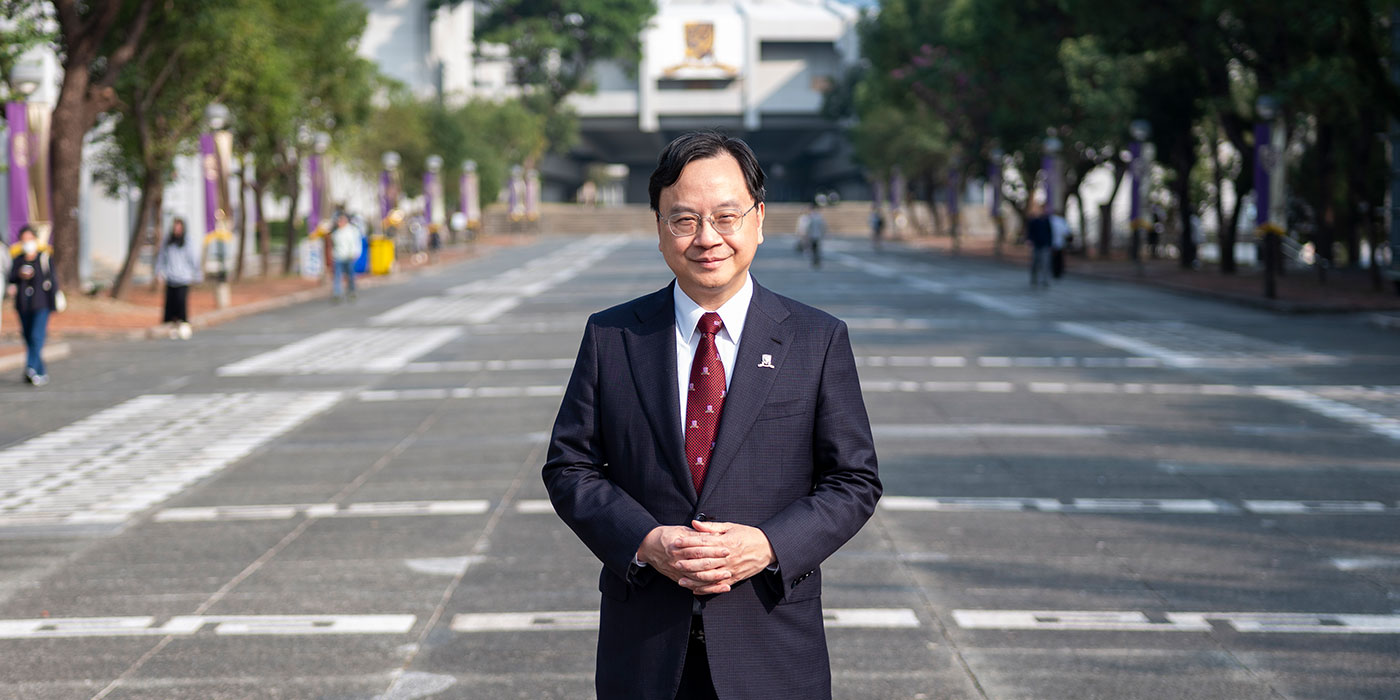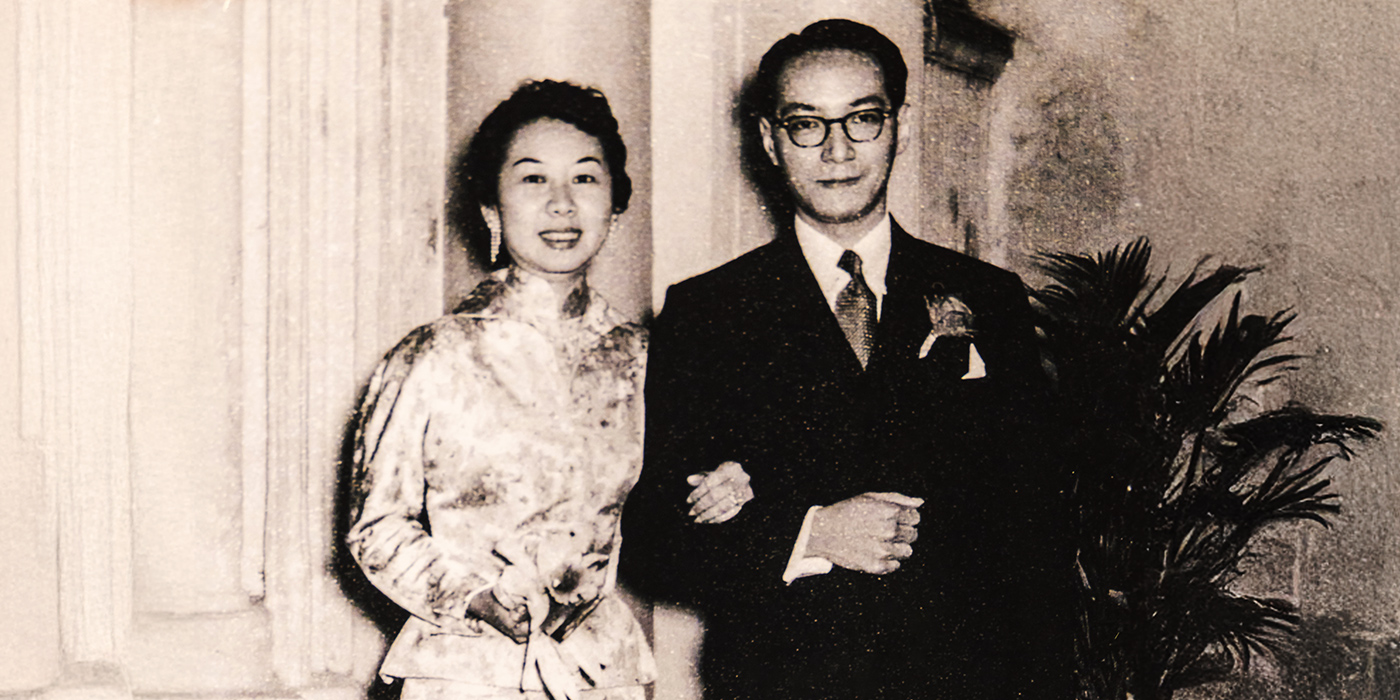A quantum multiverse
Liu Renbao navigates the quantum era
Quantum mechanics is a hot topic in sci-fi movies like Ant-Man and the Wasp: Quantumania and Tenet. Audiences are fascinated by characters travelling the multiverse, enabled by qubits (aka quantum bits). Qubits can be carried by electrons, ions or photons. Professor Liu Renbao, a CUHK professor who is an authority on quantum mechanics, was selected as one of the first New Cornerstone Investigators, a private research grant initiative, in January this year. His work will delve into quantum many-body lasers.
A quantum object must be in superposition to be a qubit. Two entangled quantum particles can collapse immediately when they are measured, even if they are far away from one another. Quantum states are susceptible to environmental factors such as measurement: when the state of one particle collapses after being measured, the state of another particle will also collapse.
Unlike ordinary light, lasers consist of vast numbers of photons appearing in the same state concurrently. The photons, pure in colour and of a high intensity, vibrate in the same rhythm: in physics jargon, they are highly coherent. Scientists around the world try to design systems to realise quantum computing. The use of photons is one method, but photons do not interact and are difficult to operate and control. Professor Liu is developing quantum many-body lasers, which will be instrumental in realising novel photonic quantum computing.

Schrödinger’s Cat is both dead and alive
A bit is a basic unit of storage in traditional computers. Information stored in a binary digit is characterised as a 0 or a 1. In quantum computing, a qubit is a basic unit of quantum information—the classic binary bit’s 0, 1 or the superposition of the binary combination. This peculiarity enables quantum computers to simultaneously process multiple pieces of information. Using the algorithm of a traditional computer to find the prime factors of a number, the time required increases geometrically in relation to the number of digits. But the time required by the algorithm of a quantum computer is just cubical, meaning it is many times more efficient than a traditional computer.
Physicist Erwin Schrödinger’s famous Schrödinger’s cat thought experiment is the classic way of explaining quantum superposition. It assumes that a cat is locked in a closed box with a glass bottle containing a highly toxic gas. The cat will die if the release of the poison gas is triggered by the quantum jump of a radiative nucleus. We must open the box to know whether the cat is dead or alive, at which point the result is certain. If we don’t open the box, there are two possibilities: the cat is in a superposition of alive and dead associated with the superposition of radiation and non-radiation of the nucleus. In other words, there is a cat both dead and alive in the box.
Schrödinger’s cat does not exist in reality, but a similar superposition exists, in the dual-state qubits. The superposition state collapses when it is measured, just as we know whether the cat is dead or alive after opening the box. As the result is certain (the cat is either dead or alive), the superposition state vanishes. Professor Liu says, “The collapse of quantum states due to environmental noise is known as ‘decoherence’. Such a process is an obstacle to realising quantum computing.”
Transforming weaknesses into strengths
Professor Liu has proposed a groundbreaking idea to leverage the “fragility” of qubits: to design a quantum system and observe how it loses its property of coherence, thereby inferring the environmental noise. “This idea accommodates the properties of coherence and decoherence. This way, I can make good use of the weakness to develop sophisticated quantum detectors. Weaknesses and strengths are two sides of the same coin.”
It is very difficult to achieve a “photonic many-body” state because photons do not interact. Professor Liu bundles up coherent atoms and photons to form an entangled “many-body laser”. Many-body physics is not a new theory, but most scientists study atoms with stable structures. Professor Liu is the first scientist to propose the idea of “quantum many-body lasers”.

“Traditional lasers can be split, so the messages they carry are susceptible to interception. Many-body lasers are different. The beam I send has a unique internal quantum state, which is different from an ordinary laser. If I discover that the structure of the beam is different from the original one, I know that the information has been intercepted.” This technology can be used for encrypted quantum communication. It can also be used for quantum detection.
The cornerstone of innovative research
Professor Liu joined CUHK’s Department of Physics in 2005. After he had completed his postdoctoral research in the US, he looked for jobs in the US, mainland China and Hong Kong. “I wanted to go to Hong Kong the most, because I like its Chinese living environment and its Western academic and evaluation system. CUHK has an excellent scientific research environment and talent. Its unique scientific research culture gives me space and resources to focus on basic research and teaching.”
He was selected among the first batch of New Cornerstone Investigators in early 2023. This funding initiative, founded by Tencent with a focus on original innovation and public good, encourages scientists to explore freely. It selected 58 outstanding scientists across the country. Two out of the three Hong Kong scientists receiving the honour are from CUHK: Professor Liu and Professor He Xuhua from the Department of Mathematics. Professor Liu received a five-year research grant of up to RMB 25 million.
Professor Liu says: “It is rare to receive such a large amount of funding to support a basic research project. We’re given high flexibility to use the funding: to buy equipment, hire staff, participate in overseas academic conferences and more; I like to communicate with top scientists, during which I’m much inspired.”
He admits that doing research is inevitably stressful, mainly because of his expectation that he can solve difficult problems. “Exercising is my daily routine. I make coffee and read books on weekends. Sometimes I go hiking when the weather is good. I relax myself whenever I encounter challenges. When I am in good shape, I will naturally have new ideas and discover new possibilities.”

About Professor Liu Renbao
- A physics professor
- Director of the Hong Kong Institute of Quantum Information Science and Technology, CUHK
- Director of the Center for Quantum Coherence, CUHK
- Awardee of the Huang Kun Prize and the Willis E. Lamb Award for Laser Science and Quantum Optics
- Senior research fellow of the Research Grants Council
- Fellow of Optica, The Optical Society of America
- Outstanding Fellow of the Faculty of Science
- Major works include the establishment of a quantum many-body theory of central spin decoherence in spin baths, the development of dynamic decoupling schemes for protecting qubit coherence, the discovery of equivalence between the zeros of central spin coherence and the Lee-Yang zeros, a proposal for atomic-scale NMR based on quantum sensing, and the invention of a diamond maser that can operate continuously at room temperature.
By Jenny Lau
Photos by Gloria Ng




















